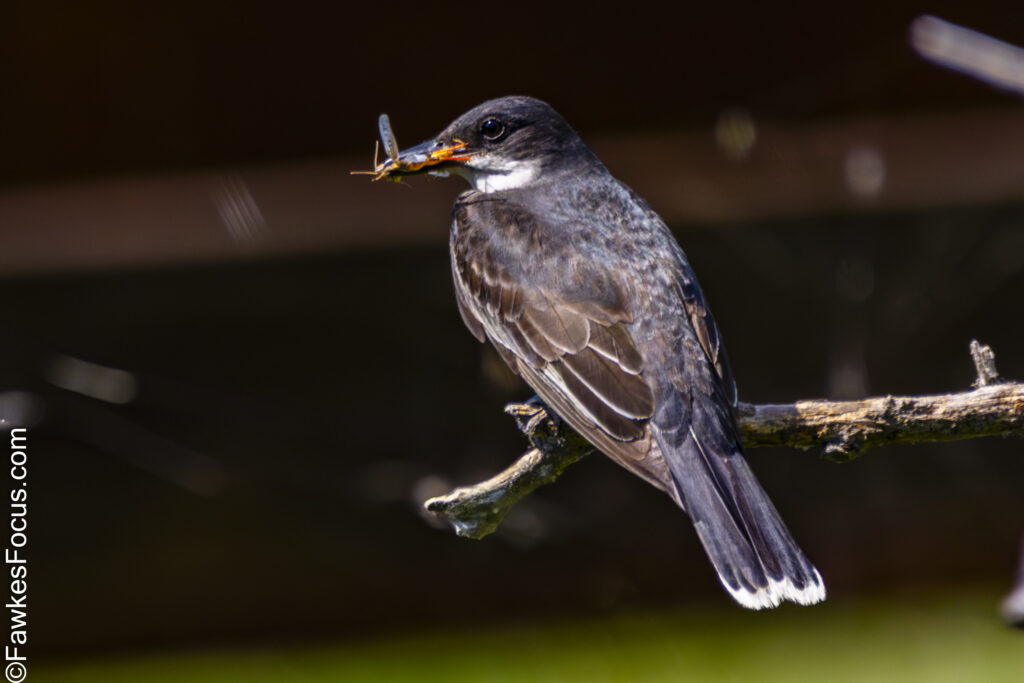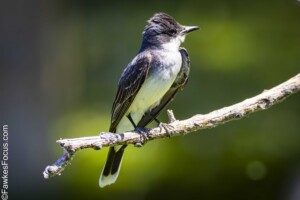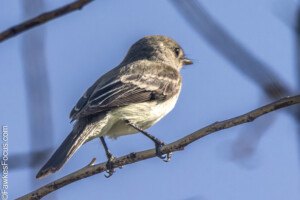Kingbirds & Flycatchers: Photographing Nature’s Feathered Fighter Jets
By Mike – Chronicler of Tiny Tyrants
Table of Contents
ToggleThe Day I Met a Tyrant
I was photographing ducks (easy targets) when something buzzed my head like a kamikaze drone. A kingbird – no bigger than my hand – was dive-bombing a red-tailed hawk twenty times its size. That’s when I realized: in the bird world, attitude matters more than size. I’ve been obsessed with these tiny tyrants ever since.
Flycatchers and kingbirds don’t pose. They don’t sit still. They’re here, there, and gone before your autofocus can blink. My camera roll is full of blurry wing streaks and empty branches where a bird just was. But when everything aligns? Pure winged magic.
Kingbirds and Flycatchers Photo Albums
Why These Birds Break My Camera (And My Spirit)

1. The Airborne Acrobatics
- Flycatchers can change direction mid-air faster than a sneeze. Their aerial moves make fighter pilots look lazy.
- Photography fail: I once shot 300 frames of an empty perch because the bird kept leaving as I pressed the shutter.
2. The Tiny Tyrant Complex
Personal story: Watched one chase off a bald eagle. The eagle looked genuinely embarrassed.
Kingbirds earned their name by attacking crows, hawks – even drones and my hat once.
3. The Vanishing Act
- Pewees return to the exact same perch between flights… after making you wait just long enough to lower your camera.
- Camera tip: Pre-focus on the favorite perch and use burst mode when they return.
4. The Identity Crisis
- Many flycatchers look identical except for their calls. Even scientists argue about them.
- Confession: I have a folder called “Maybe Willow Flycatcher??” with 47 nearly identical photos.
My Most Absurd Flycatcher Moments
The Time I Became a Perch
Was photographing a phoebe when it landed on my lens hood. We both froze. I didn’t breathe for a full minute until it flew off.
The Great Kingbird War
Documented two kingbirds battling over a fence post for three straight hours. Got amazing action shots and a sunburn.
The Flycatcher That Fooled Merlin
Even the bird ID app gave up on my photos of a confusing fall empidonax. Some mysteries remain unsolved.
The “Nesting Material” Incident
A scissor-tailed flycatcher stole my bright orange lens cloth for its nest. I let it keep it – that’s dedication to art.
Photography Tips (Mostly Learned Through Failure)
- Master the “Wait-and-Swear” Technique
They always catch insects the millisecond you look away. It’s science. - Eyes Like a Flycatcher
Learn their favorite perches (dead branches, wires, fence posts) and stake them out. - Lighting is Everything
Backlight turns their wing feathers translucent. Side light reveals every tiny feather. - Embrace the Blurs
A slightly out-of-focus action shot with personality beats a perfect boring pose.
Meet the Tiny Tyrants [Your Photo Galleries Here]
Eastern Kingbird
- Cool fact: That white tail tip is like a “back off” warning light to predators.
- My shot: One mid-air combat with a much bigger bird. David vs. Goliath vibes.
Scissor-Tailed Flycatcher
- Cool fact: Their absurdly long tail is like a fighter jet’s afterburners.
- Camera win: Caught one with tail streamers glowing in sunset light.
Great Crested Flycatcher
- Cool fact: They nest in tree cavities and always include a snakeskin (real or plastic!).
- Fun find: Photographed one stealing a piece of my neighbor’s garden hose for its nest decor.
Least Flycatcher
- Cool fact: Weigh less than two pennies but migrate thousands of miles.
- Personal triumph: Finally got a clean shot of one after 3 summers of trying.
Why These Birds Matter
These insect-eaters are nature’s pest control. One kingbird can eat hundreds of flies daily. Many species are declining due to habitat loss and insect population crashes. That’s why I leave my yard a little “messy” with native plants – bugs need homes so flycatchers can eat them!
Your Turn to Try
Spotting tips for beginners:
- Listen for loud “che-bek!” or “pewee!” calls in summer
- Watch for quick flights from perches and returns
- Check fence lines and dead branches – their favorite stages
You don’t need a fancy camera – even phone videos can capture their crazy aerial moves. Just don’t expect them to care about your photography plans.
Happy birding,
Mike
FawkesFocus.com
P.S. My neighbors think I’m crazy for staring at “just some little brown bird” for hours. They’re not wrong.






